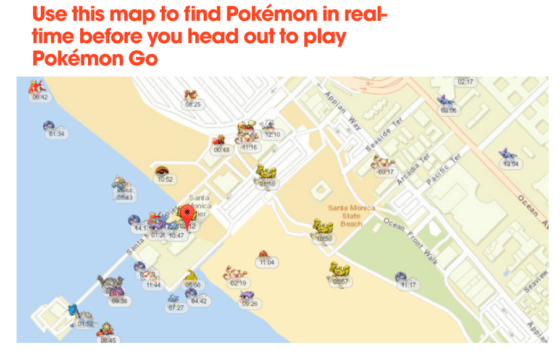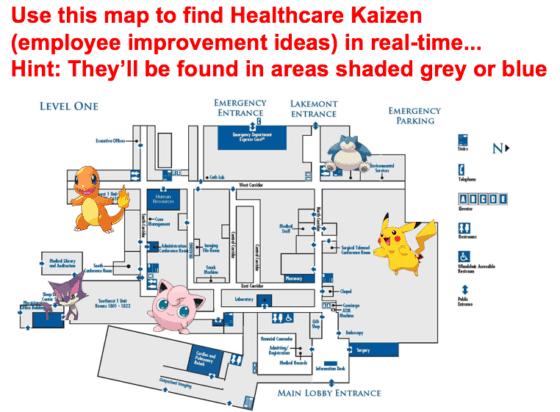Reminder: I'm doing a free webinar today on Strategy Deployment, if you want to register to view that live or receive the recording. On August 3rd, Dr. Greg Jacobson and I are also doing Episode #9 of our “Ask Us Anything!” series (a live video chat) and you can learn more here.
 I don't get the whole Pokémon thing. Even though I grew up in the Nintendo Gameboy generation, I was more into Tetris and other games. I used to really be into video games (over time having a TI-99/4A computer, Apple IIGS, a Sega Genesis, a Playstation PS-1 and a PS-2… and after that, my video game playing and buying trailed off over time).
I don't get the whole Pokémon thing. Even though I grew up in the Nintendo Gameboy generation, I was more into Tetris and other games. I used to really be into video games (over time having a TI-99/4A computer, Apple IIGS, a Sega Genesis, a Playstation PS-1 and a PS-2… and after that, my video game playing and buying trailed off over time).
You also remember I “created” a Lean-based Nintendo Wii game one April (and I enjoyed the real games of Wii Sports and Wii Fit).
So, I won't claim to understand the Pokémon Go craze. No other app has ever been downloaded more in its first week.
It fascinates me that adults will walk around, staring through their screens in a search for cartoon characters.
In the news, we've seen stories about hospitals being invaded by people trying to “Catch ‘Em All,” with headlines such as:
Hospital issues warning after becoming Pokémon Go hotspot
Pik-achoo! Hospitals ask Pokémon Go fans to play elsewhere
Hospital bans ‘Pokemon Go' from campus citing patient safety, privacy
I've heard some people say that hospitals should be more creative, finding ways to engage people who find their way onto the hospital campus. Some hospitals are using Pokemon Go to inspire mobility and health (finding new ways to “add value,” even if the Pokemon Go players are using the hospital space for free?):
Children's hospital using ‘Pokemon Go' to get patients out of bed
Seattle hospital uses Pokémon Go in patient recovery
Pokemon Go helps kids at Phoenix Children's Hospital: ‘Beautiful to see'
I wonder how many hospital leaders are caught up in the Pokemon Go craze? Are they willing to spend time walking around searching for Pokemon characters?
If so, I'd propose they spend time walking around, engaging with employees and looking for improvement ideas. You “gotta catch 'em all!” when it comes to improvement opportunities.

In the Kaizen improvement process, managers need to get out of their offices and conference rooms, just as Pokémon Go players get out of their homes and their offices.
To many people in hospitals, “Kaizen” is as foreign of a word and concept as “Pokémon” is. Both words and concepts have Japanese origins. Are some leaders and employees as closed minded about Kaizen as I am about Pokemon?
Last week, I created a mocked up Kaizen parody of Pokémon Go, and I tweeted this image:
If hospital managers play #PokemonGo, ask them to go find employee improvement ideas. Catch 'em all! #Lean #Kaizen pic.twitter.com/umeYgzTT6Q
— Mark Graban (@MarkGraban) July 22, 2016
Instead of searching for Pokémon in city streets (which causes health and safety problems), why not think of searching for improvement ideas (Kaizen opportunities) in the halls and departments of a hospital.
You can't catch Pokémon unless you go looking for them. The same is true for Kaizen opportunities.
And, I'd assume Kaizen opportunities are easier to find than those cute characters. Kaizen opportunities are everywhere! Talk to your employees. Ask them what problems they face, what gets in the way of ideal patient care, and ask them what you and they can fix together.
As with Pokémon, what will drive you to catch 'em all?

Some Pokémon Go players have use separate map apps to show you where the Pokémon are, making them easier to catch.
So, I thought of a similar concept for Kaizen… do we really need a map to tell us where to look?
If your employees are obsessed with #PokemonGo, why not help them find improvement ideas? Catch 'em all! pic.twitter.com/iILdbgK4Eq
— Mark Graban (@MarkGraban) July 22, 2016
Here's a Pokémon map:

So I imaged a hospital “Kaizen” map showing you where to look:

But, Kaizen ideas and opportunities are EVERYWHERE! You don't really need a map. Visit any department. Talk to any employee. There are things that can be improved and people who are willing to help.
On LinkedIn, I saw somebody post this picture from some workplace (I'm not sure where it was from):
The person posting this sign has a point, but also demonstrates poor leadership skills (via LinkedIn) pic.twitter.com/K8QEgNCPkB
— Mark Graban (@MarkGraban) July 25, 2016
I'm serious when I said the person who posted the sign has poor leadership skills.
For one, you don't really communicate effectively with employees through nasty signs (or emails or memos). Effective leaders understand their employees and their motivations. They work to create engaging workplaces that are more interesting than some silly smartphone game.
Maybe if leaders spent more time looking for Kaizen ideas — and engaged employees and their brains — those employees would be less likely to waste time on Facebook or video games? Engaged employees who are listened to and respected… those who are part of a team with a shared purpose and mission… are going to spend free time on improvement work instead of playing games, right?
What do you think? Please scroll down (or click) to post a comment. Or please share the post with your thoughts on LinkedIn – and follow me or connect with me there.
Did you like this post? Make sure you don't miss a post or podcast — Subscribe to get notified about posts via email daily or weekly.
Check out my latest book, The Mistakes That Make Us: Cultivating a Culture of Learning and Innovation:










[…] Pokémon Go, Kaizen, and Leadership de Mark GRABAN. En este artículo GRABAN hace una divertida relación entre el juego Pokémon Go y lo que él llama Kaizen Go. […]